17 Best Personal Task Management Software Options
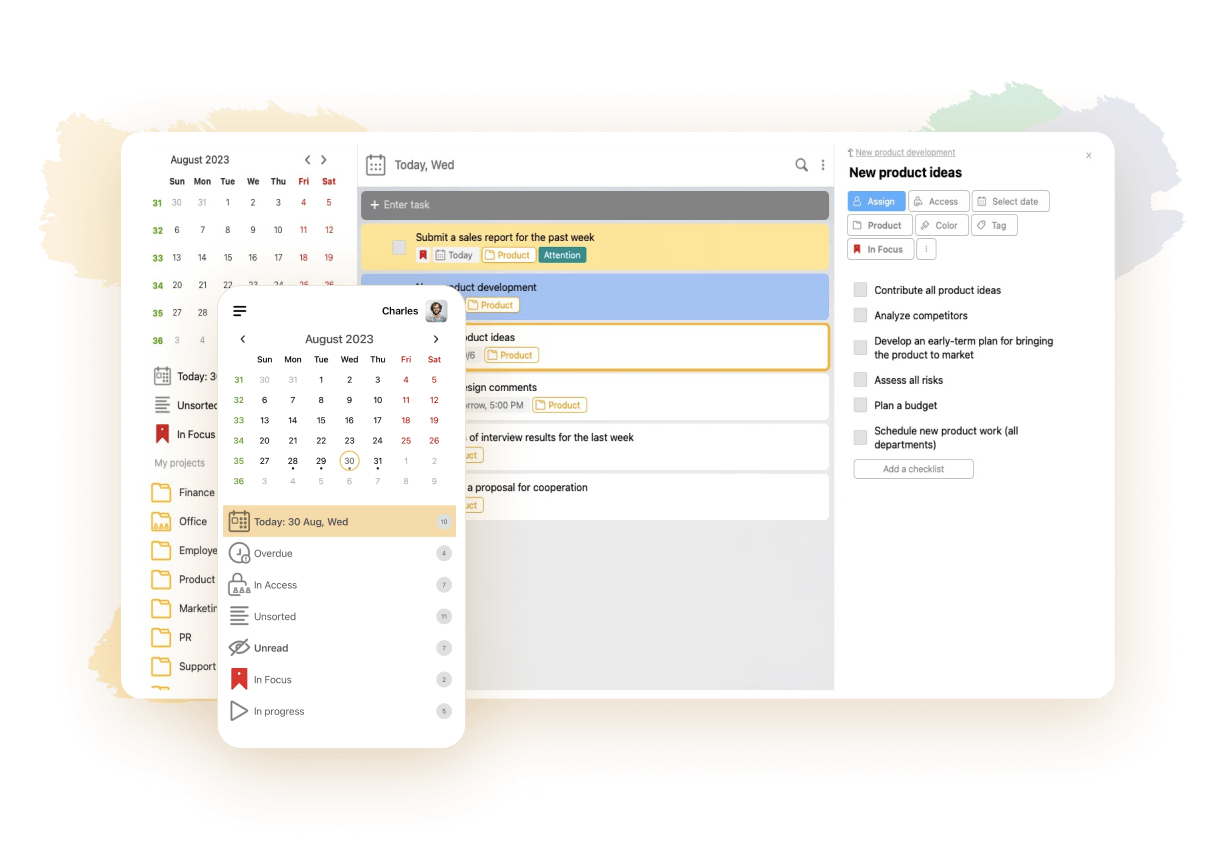
A personal task tracker is an app that lets you plan your time and resources more rationally. With its help, you’ll be able to conveniently schedule your activities for months ahead and track the completion of to-dos. In its most basic form, such an app offers a timeline where you can add and arrange your tasks. To differentiate themselves from competitors, developers can add various extra features to their products and enhance the design. In this article, we’ve collected the most popular solutions of this sort. They differ greatly in their functionality, prices and compatible devices. What they share in common is their target audience, which is first and foremost private individuals.
Tips on Selecting Personal Planning Software
Task management software for individuals differs from the apps that were developed for business in its functionality. The former doesn’t need collaboration tools at all – or needs only the basic ones. For instance, a private individual might want to share their plans with their family members – but they will be unlikely to edit a spreadsheet collaboratively. In addition to collaboration, business-oriented apps tend to be packed with advanced features, such as performance trackers and reports or Agile and Scrum management tools. Most products for private users offer extra features as well. But their developers typically focus on several exciting tidbits rather than squeezing all the imaginable tools into one solution.
Apart from functionality, it would be wise to ask yourself the following questions when choosing an app:
- In which format is it available? Can you access it from your browser – or is it necessary to download it on your smartphone or desktop? Which operating systems is it compatible with?
- Will you need to pay to activate the features that you’re interested in – or are they available at no cost?
- Do you like the app’s UX/UI? Will you get aesthetic pleasure from working with it? Will it be comfortable for you to use its features and push its buttons?
Below, we’d like to share our meticulously curated selection of personal planning tools with you. All of them have free plans. When talking about their prices, we’ll mean their monthly subscriptions. The only exception will be the cases when an app lacks a monthly plan – and we’ll mention it separately.
LeaderTask

💌 User rating: 4.8
👍 Reason to opt for it: No need to be online to work on tasks
👎 Reason to avoid it: Steep shallow curve if you try to embrace all the functionality of the app in one go
🏳️ Most affordable subscription: $3.33
This app is a firm favorite of both private individuals and business teams. It’s compatible with many different devices and operating systems. It integrates with dozens of third-party solutions, which means you’ll be able to effortlessly pull data from multiple sources. You’ll be allowed to work with its task-managing tools even offline.
LeaderTask lets you create as many tasks as you fancy, break them down into subtasks and arrange them into a hierarchical structure. You can add due dates to tasks, prioritize them, label them, assign statuses to them and set up reminders, including recurring ones. The app allows you to attach files to your schedule items and move tasks between projects. When working with a team, you’ll be able to delegate tasks to others, monitor their progress and discuss them in a built-in chat. The Focus feature comes in handy for highlighting the to-dos of the top priority.
LeaderTask boasts genuinely extensive functionality and is highly customizable. If you try to embrace all its features in one go, you may feel overwhelmed. That’s why we recommend familiarizing yourself with the product gradually.
ClickUp
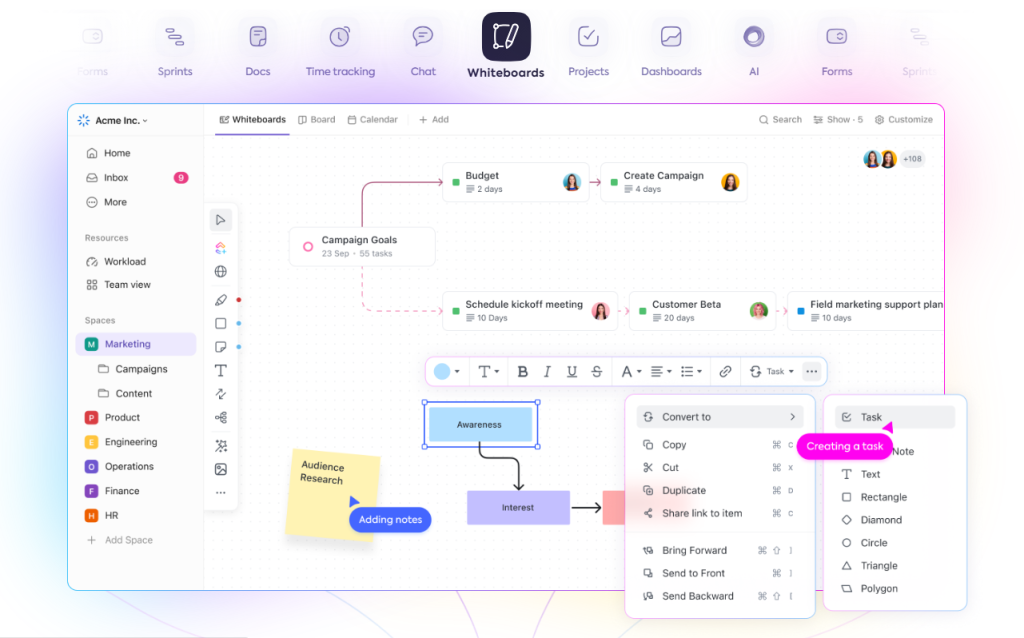
💌 User rating: 4.6
👍 Reason to opt for it: Hotkeys and slash commands
👎 Reason to avoid it: Excessive functionality for private users
🏳️ Most affordable subscription: $5
First and foremost, it’s a project management tool for teams. It offers extensive collaboration features, based on cloud technologies, and is popular among many businesses. The list of built-in features includes an inbox, goals, reminders, calendars, documents and many more. The functionality of this product can be excessive for managing day-to-day personal affairs. However, private individuals love ClickUp for at least two reasons. First, you can flexibly personalize its looks and settings. Second, it lets you save time and effort by using slash commands and hotkeys.
Google Tasks

💌 User rating: 4.6
👍 Reason to opt for it: Compatibility with the whole ecosystem of the brand
👎 Reason to avoid it: Limited task dependencies and task hierarchy
🏳️ Most affordable subscription: $39.99 per annum
This product effortlessly integrates with all the other ones from the ecosystem of its brand. It will be easy for you to sync your data across multiple devices, regardless of their operating systems. The processes of creating and editing tasks, setting due dates and times for them and splitting them into subtasks are incredibly intuitive. The app allows you to conveniently review all your planned to-dos at a glance. You’ll be able to convert the emails from your Gmail inbox into your tasks.
As for the shortcomings, it’s not the best product for those who deal with complex projects. It might be not your cup of tea if you need to create a multi-level task hierarchy or intricate task dependencies. Besides, there is no monthly subscription.
Asana
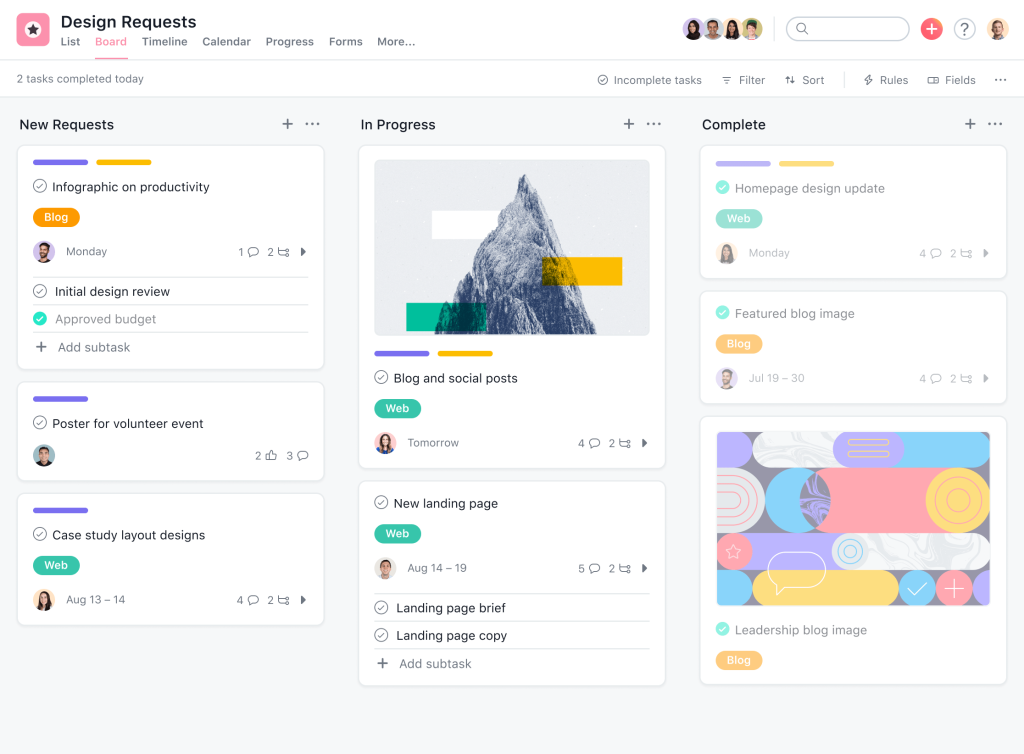
💌 User rating: 4.6
👍 Reason to opt for it: Excellent mobile app
👎 Reason to avoid it: Lack of time-tracking instruments
🏳️ Most affordable subscription: $10.99
Asana boasts one of the best mobile apps in its niche – and its web version is very decent too. This solution allows you to easily create, edit, categorize and manage your tasks as well as split them into smaller parts. You’ll be able to view your to-dos in the format of a list or a Kanban board. When you need to attach a file to a task, you’ll be able to pull it from a cloud or your device’s memory. The task management functionality of Asana can seem limited to large teams – but it’s pretty much enough for smaller ones and individuals.
On the flip side, this product lacks time-tracking instruments. Some people find them essential to boost their productivity.
Trello

💌 User rating: 4.5
👍 Reason to opt for it: Built-in automation tool for getting rid of excessive to-dos
👎 Reason to avoid it: Lack of task dependencies
🏳️ Most affordable subscription: $10
This product immediately catches the eye thanks to its visually appealing Kanban-style cards. They allow you to nicely organize your workflows, regardless of whether you’re planning to act alone or with a team. Trello integrates with multiple third-party products. It’s powerful enough to deal with complex business projects – and intuitive enough for individuals.
One of the most common mistakes that hinders productivity is creating too many tasks, especially if they are tedious or repetitive. Trello will prevent you from this blunder – its built-in automation tool will help you detect and remove such to-dos. The app’s most pronounced weak aspect is the lack of task dependencies.
ProProfs Project
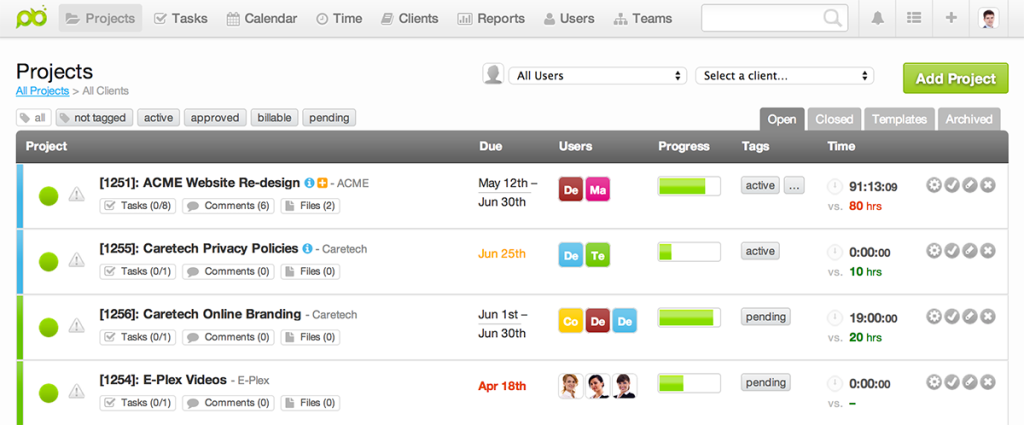
💌 User rating: 4.5
👍 Reason to opt for it: Lack of excessive features
👎 Reason to avoid it: Limited integrations
🏳️ Most affordable subscription: $2
You’ll find yourself on an easy-to-use dashboard where you can add tasks, drag and drop them, prioritize them and add alerts or notifications to them. The app is not too rich in features and integrations. The tools that it offers are just the required minimum to always remain on time with your to-dos – which is awesome for users who value simplicity.
Sunsama
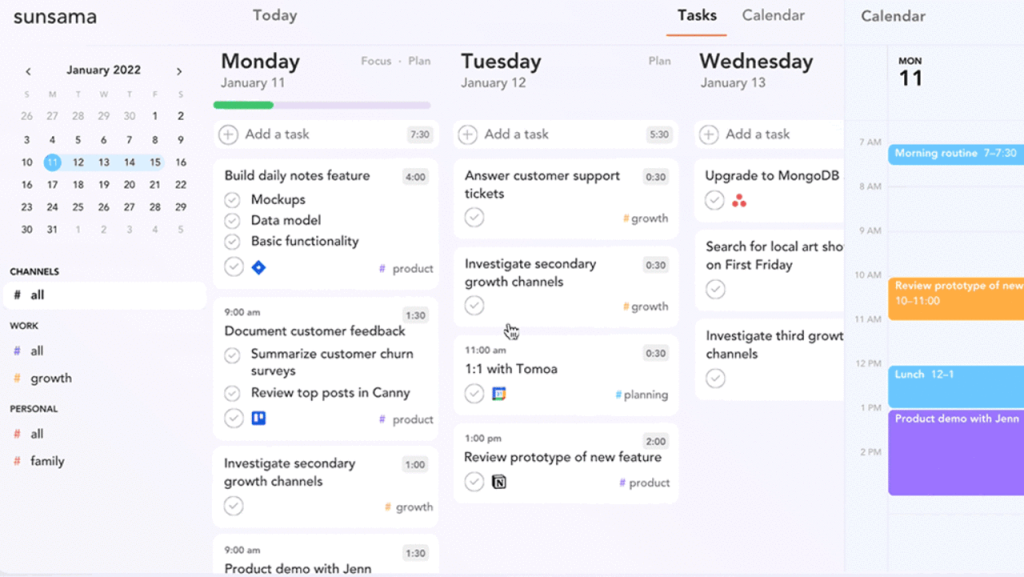
💌 User rating: 4.5
👍 Reason to opt for it: Tasks that you failed to complete today will be automatically rescheduled for tomorrow
👎 Reason to avoid it: Limited mobile app functionality
🏳️ Most affordable subscription: $10
A high demand for this solution comes from the business sphere. However, its interface is so simple and user-friendly that it attracts numerous private individuals too. Sunsama has all the necessary features to manage your tasks and events. If you fail to complete a specific to-do today, it will be automatically rescheduled for tomorrow. You’ll be able to pull data from third-party apps that you might use.
On the flip side, Sunsama’s version for computers outperforms its mobile app.
Akiflow

💌 User rating: 4.5
👍 Reason to opt for it: Time-blocking feature
👎 Reason to avoid it: Tags and labels can look messy
🏳️ Most affordable subscription: $19
Consider this one if you need a top-notch time-blocking feature. It will enable you to plan your activities more rationally and avoid situations when several tasks or events overlap. Akiflow integrates with various third-party solutions. It can send you notifications to remind you about the planned to-dos. It has built-in tools that will help you avoid common time management mistakes.
Akiflow allows you to label your schedule items and add tags to them. But after you do it, your content might look messy. Besides, it’s a costly app.
DragApp

💌 User rating: 4.4
👍 Reason to opt for it: Email-centricity
👎 Reason to avoid it: Not too rich in features
🏳️ Most affordable subscription: $8
This product stands out from the rest thanks to its email-centricity. It can convert your Gmail into a full-fledged dashboard where you’ll be able to manage your tasks, set deadlines for them, create notes and so on. The app facilitates the process of following up on your emails. One of its killer features is the opportunity to create Kanban boards right in Gmail.
On the flip side, DragApp is not too rich in features.
Bear
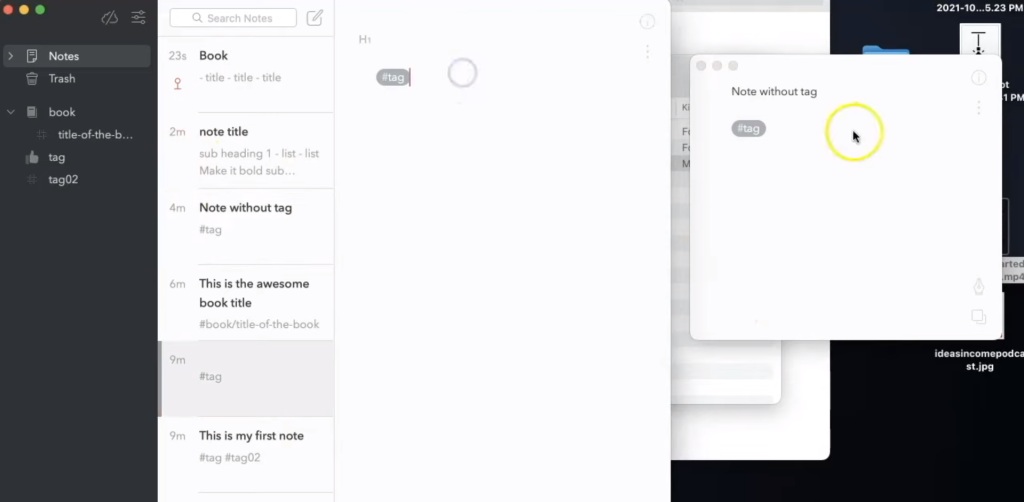
💌 User rating: 4.4
👍 Reason to opt for it: Progress bar to monitor your performance
👎 Reason to avoid it: Technically, it’s a note-taking app
🏳️ Most affordable subscription: $2.50
This app was originally designed for taking notes and working with checklists. It recently underwent a large-scale upgrade, which boosted its functionality and user-friendliness. Its design elements are highly customizable, from themes to fonts, so it seems to be a worthy option for users with a refined taste. You can create tasks, merge them into lists, add details to them, scan documents, create tables in your notes, preview PDFs and links and play GIFs. It will be convenient for you to drag and drop content from other apps, make notes with the help of natural language input, capture webpages and share your to-dos with others. Under each note, you’ll discover a progress bar that will reveal your progress in a visually comprehensive manner.
Focus To-Do

💌 User rating: 4.4
👍 Reason to opt for it: Built-in Pomodoro timer
👎 Reason to avoid it: Process of managing your tasks can take too much time
🏳️ Most affordable subscription: $1.33
There is a built-in Pomodoro timer in this app. The original Pomodoro technique offers fixed time frames for work and rest – but the app allows you to modify them according to your tastes and habits. This method is supposed to make you more productive. Apart from the timer, Focus To-Do enables you to create tasks, make them repetitive, organize them into lists, set up reminders for them and prioritize them with the help of color-coding. This product also offers detailed productivity statistics.
All of this sounds great – but some users end up spending too much time in the app. They become a bit obsessed with optimizing their schedules.
Nozbe

💌 User rating: 4.4
👍 Reason to opt for it: Adherence to the Getting Things Done methodology
👎 Reason to avoid it: Limited functionality of the free version
🏳️ Most affordable subscription: $8
This app sticks to the Getting Things Done methodology. In a nutshell, it means that you’ll spend as little time as possible configuring the app itself and its contents. Instead, you’ll focus on doing things in real life and not on a digital screen. Nozbe is simple and suitable not only for solo individuals for also for small teams. It has all the basic features of an app from its niche. It lets you attach files to your todos, convert emails into tasks and pull data from third-party solutions. Comprehensive charts and productivity reports will enable you to assess the results of your efforts and understand what can be improved.
Unfortunately, the functionality of the free version is limited and the price of the monthly subscription is not too low.
Remember The Milk

💌 User rating: 4.4
👍 Reason to opt for it: Smart lists
👎 Reason to avoid it: Dubious pricing policy
🏳️ Most affordable subscription: $39.99 per annum
The target audience of this one is private individuals. Its UX/UI is nice and simple. The process of managing your tasks is highly intuitive. You can benefit from colorful to-do lists, a daily checklist tool, handy tags and natural language input. In addition to conventional reminders, there are location-based ones – they will go off only if you’re geographically close to a particular place such as your home. You can receive reminders through multiple communication channels, such as text, the X social network or email. The app integrates smoothly with many popular email clients and lets you convert the contents of your inbox into tasks. One of the key competitive features of Remember The Milk is smart lists. They let you arrange your content with the help of various criteria, such as priorities, tags and due dates.
The biggest disadvantage of this app is its pricing policy. The functionality of the free version is limited. When you decide to upgrade to premium, the only way out is to pay the full price of the annual subscription.
Things

💌 User rating: 4.4
👍 Reason to opt for it: Widget that lets you handily overview your tasks
👎 Reason to avoid it: Limited integrations
🏳️ Most affordable subscription: $9.99
Its target audience is Apple aficionados who are planning to use the app individually or with a small team, such as a family. The interface of this app is eye-candy and there are many handy tidbits that you’ll appreciate. For instance, the quick entry feature lets you put down your thoughts as fast as possible even if you’re on the run. The search function is rather powerful and allows you to look for tasks based on their themes or keywords. To manage your to-dos, you can rely on the drag-and-drop editor. It will be easy for you to categorize your content and set deadlines. As a cherry on top, there is a widget that can remind you about your plans without the need to open the app.
As for the drawbacks, Things are not too cheap and fail to support multiple integrations.
Microsoft To Do
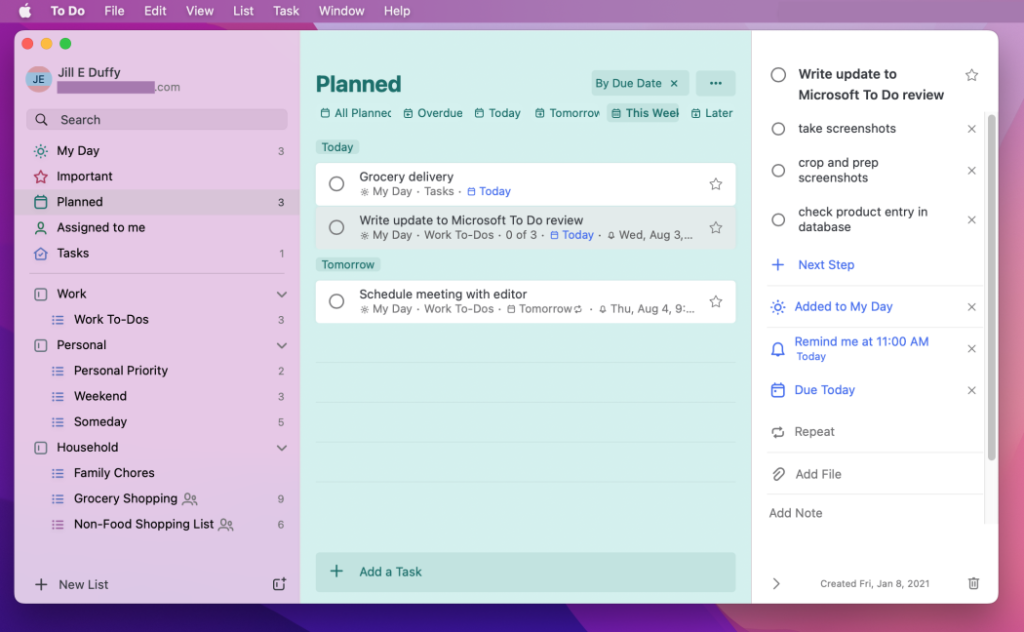
💌 User rating: 4.3
👍 Reason to opt for it: Opportunity to convert Outlook emails into tasks
👎 Reason to avoid it: Lack of collaboration tools
🏳️ Most affordable subscription: Free
Contrary to a stereotype, Microsoft products aren’t compatible exclusively with PCs with the Windows operating system. They function without a hitch on Mac computers, iPhones and Android phones too. This one was purposefully designed for private and not professional use. It’s a simple cloud-based checklist app without extensive collaboration tools or sophisticated business-oriented features. As for collaboration, it can be a drawback for a person who likes to share their content with friends and family members.
After you create tasks, you’ll be able to merge them into lists, share them with others, tag them, use numbers to prioritize them and switch between various viewing formats. The app allows you to convert Outlook emails into tasks as well as pull your to-dos from other apps of the same brand. This solution inherited its functionality from the once-popular Wunderlist that Microsoft acquired. That app had a large audience, a strong team and developed functionality, which predetermined the potential of its successor.
Clear Todos
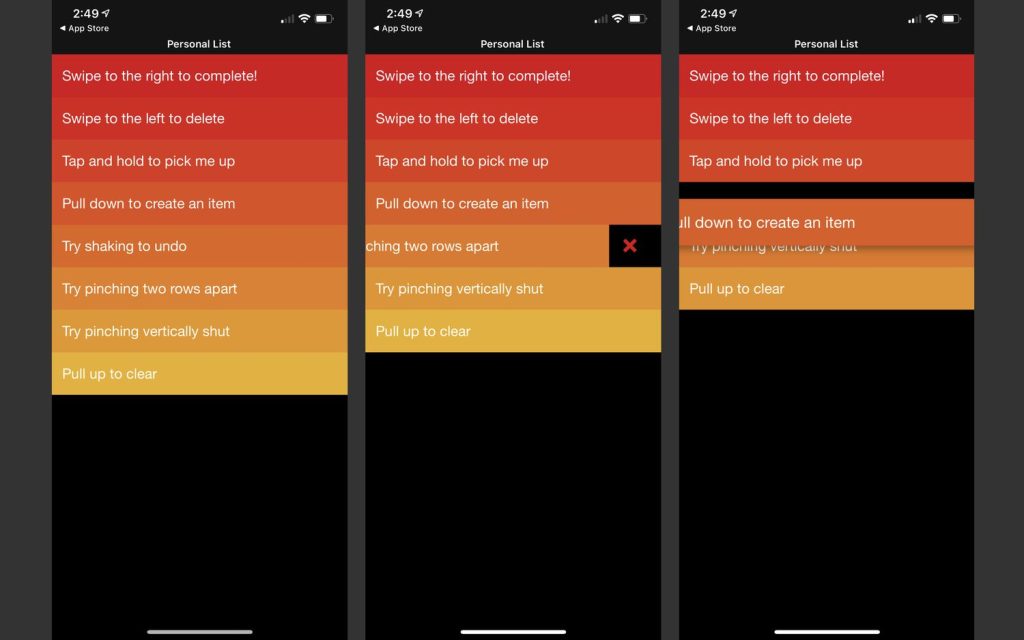
💌 User rating: 4.3
👍 Reason to opt for it: Genuine simplicity
👎 Reason to avoid it: Lack of advanced features
🏳️ Most affordable subscription: $4.99
Some people dream of a powerful program with versatile functionality and elaborate settings. Others miss the pre-digital era when they used to put down their plans on paper with a pen or a pencil. Clear Todos caters to the latter segment. It’s extremely simple and user-friendly. All you can do is write down your to-dos and cross out the completed ones. Thanks to such an approach, you won’t lose a single excessive moment managing the app and will be able to fully concentrate on your tasks.
Jira

💌 User rating: 4.3
👍 Reason to opt for it: It can double as a personal task tracker for a professional who uses it for business
👎 Reason to avoid it: Might respond slowly when handling large projects
🏳️ Most affordable subscription: $8.15
We included this product in our list because if you need to use it for work, you might want to rely on it for your personal needs too.
It was designed primarily for business purposes, especially in the spheres of software development and engineering. It’s spot-on for Agile and Scrum management, which means it offers comprehensive roadmaps, has backlogs and can generate insightful reports. This app can integrate with literally thousands of third-party products. Professional users value it for the well-thought-out bug-solving functionality – which is no wonder given that Jira was initially conceived as a technical support solution.
Because of multiple sophisticated features, the learning curve of this app can be steep. Its price can be prohibitive for small teams. Its collaboration tools can seem limited and a bit too complex for some users. But if you already use Jira for your work, all these shortcomings shouldn’t be too important for you as a private individual.
Final Thoughts
You may want to deploy a personal task management solution to boost your productivity and be always on time with your to-dos. Such apps are available in two varieties. The first one was conceived with only private users in mind. Its functionality is rather basic and its learning curve tends to be shallow. The second variety is products that can double for personal and professional use. They have collaboration tools and more extensive features, such as performance trackers or AI-based assistants. The latter type usually costs more than the former. We genuinely recommend LeaderTask as the five-star personal task manager. It’s affordable, rich in features and incredibly user-friendly.



